A bright decoration of any garden will be truly a sunny flower with an exquisite name - Gaylared Perennial. Unusual two- or tricolor terry chamomile, quite large sizes, with a long period of flowering, can transform any corner of a flower garden or garden. Fire-yellow, red, orange and brown scenes of inflorescences for a long time will delight the eyes with bright colors. And taking into account unpretentiousness when planting and leaving this plant, even a novice amateur gardener will be able to grow it. All of these, as well as other features of Gaylardi's growing multi-year, variety of its varieties and use in landscape design in combination with other plants, will be presented in detail in the article.
Gaylardi Perennial, Description
The flowering plant, Gaylardi, has a somewhat similar names among themselves: Gailaria, Guyardia or Gaillardia from Latin Gaillárdia. This genus of plants received its unusual name in honor of the French judge Guyara, who was extremely fond of Botanic, was considered her patron and patron. Gaylardi Pumplings - a drought-resistant herbaceous plant related to the Astera family. His homeland is considered to be North and South America, there are currently about 24 species of this plant.
The inhabitants of America were first called this flower "Fiery Wheel" and compared its distribution over the Prairies with a fire, which captures more and more territories. And indeed, multiplying in the wild Summer, Gaylardia quickly spreads in the district.
In the homeland of the origin of this flower there is even a legend about his appearance. In the distant times, in one Indian tribe lived skillful weaver, manufacturing incredible beauty of carpets and blankets. For many years, people bought these wonderful products from him. But when the master was aged, he decided to finally seize the unique beauty of the blanket from the favorite ornaments of yellow, red, brown threads. When the elder died, he was buried, wrapped in this amazing bedspread. What was the surprise of tribesmen when the same flowers appeared in the spring on his grave: yellow, orange, red and brown shades. Willingly colors quickly broke through the territory of Prairies and won the love of the Indians. In honor of this master they called the "Indian blanket" flower. So, according to the parable, and Gaylardi appeared.
Gaylardi Pumplings - a small snoxidate bush, height from 25 to 70 cm, depending on the variety of perennial. Branched stem, richly covered with leaves. The sheet form resembles a blade or extended oval, eliminated by thin hairs.
The mainest property of this plant is colorful, bright, terry flowers. The size of the flower in diameter reaches an average of 10-15 cm; Collected in inflorescences - baskets with a convex bed. In the semi-world basket, the tongue flowers are located in 2-3 rows, and terry consist of born median flowers, a funnel-shaped form. It blooms abundantly, starting from the second half of June and to the most frosts.
Gaylardia flower is surprised by a variety of color gamut. Shades vary from light yellow, orange and purple to brick, brown and brown colors. If you look closely, you can see on one shrub of plants flowers of different color. As a rule, the edges of the petals are lighter than the middle of the inflorescence. Such a bright contrast makes the flower even more attractive. In addition, the colors retain their freshness for a long time and after cutting, allowing them to admire them by one day.
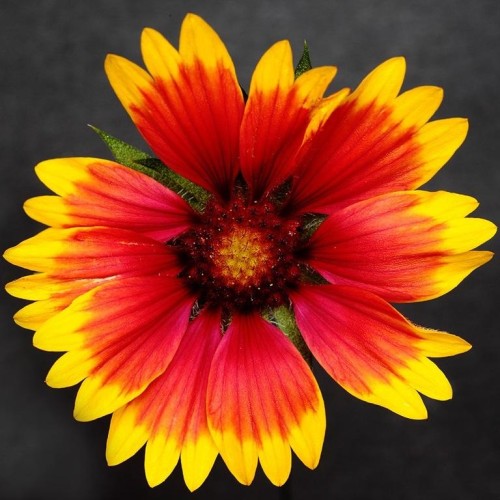
The plant is not demanding in care and perfectly carries out almost on any plot. These qualities, as well as its attractive form, contributed to the widespread use in flower growing.
Gaylared Perennial, landing
The cultivation of Gaylardia many years does not require much effort, but the highlights must be labeled.
Considering that this is a perennial plant light-cuply, it is necessary to plant it in the appropriate place: open, well-lit and not shaded.
Soil for planting is suitable any, preferably - light, aligned, nutritious and drained. It is better to avoid heavy soils with moisture stagnation and increased acidity.
The perennial multiplies in two ways in two ways: seeds and division of the mother bush.
- The easiest way to multiply Gaylardi Perennial - vegetative, that is, the division of the bush.
Choose a large, lush bush and gently separated part of the plant, trying to damage the root system as little as possible. This procedure is carried out either in early spring (approximately in April), or in the fall (after trimming colors, no later than September). This moment is important, as a condition that allows a new plant to be rooted either before the start of flowering (when planting in the spring), or before the onset of cold weather (when landing in the fall).
Before boarding, a bed is prepared accordingly: fertilize, make holes, abundantly moisturizing them with water. For fertilizer, humid, wood ash, compost and mineral fertilizers are introduced into the soil (on average 35 g per bucket of water), then the garden is drunk and cooked well. After planting the plants are also watered with water. Next year, the plant is already growing rapidly.
Considering that the bush of this perennial grows slowly, it is not necessary to divide it on a lot of small parts. In order to get a full-fledged bushes of Guylardia, a rather parent bush is divided into 3-4 parts.
- Reproduction seeds It occurs both spontaneously and artificially. The easiest way to grow Gaylardia many years of seeds - self-sowing. It is only necessary to leave the best, large and bright inflorescences to the late autumn, of which the seeds will fall into the ground and in the spring will go. If it is necessary to then streamline the flower, it will only be necessary to swing it and sear the searches received.
It is important to know that with seed reproduction, the color of new perennials will most often differ from the parental individual.
If it is necessary to prevent abundant self-sewn, which can lead to the spread of Gaylardia across the flowerba, you need to trim faded flowers immediately after flowering.
With the controlled reproduction of Gaylardia, seeds leave the best color pains to aging seeds. When the seed material completely matures, they are assembled into a special bag or a linen handbag, dry well to sow in the spring to bed. You can also assign a faded flower of gauze so that the seeds do not pour to the ground prematurely.
Seeds are sown in the prepared soil, shallow, almost on its surface. The depth of the seal should not be more than 0.5-1 cm, since the likelihood does not germinate seeds. Sometimes enough just slightly press their land, so as not to blow out the wind. The region is then abundantly moisturized with water and covered with a film. Thus, the creation of a greenhouse effect ensures the germination of seeds already 10-12 days after landing. Sowing is carried out in spring (approximately in April). At the end of summer, when shootings are growing and fixed, they can be switched, leaving the distance between bushes at least 20 cm. It is necessary in order for the adult bush to develop and branch out freely, without shading and infringement of neighboring. And although in the first year the plant forms a rosette of about 10-15 leaves, in the future it will turn into a lush and spreaded bush.
Gaylared's bloom will be only the next year, but to grow, without transplanting in one place, can be about 4-5 years.
It is important to remember that this long-term shrub does not like to oveurgement, and excess moisture negatively affects the growth and development of the plant.
For the reproduction of Gaylardia, a seaside method is also applied to the shooting of shoots. But, since these methods are very laborious, they are not widespread.
Gaylardi Perennial, Care
Although Gaylardia is long-term and not good in care, there are highlights whose compliance will allow these flowers without efforts on the flowerba.
Light
The plot should be sunny or only slightly shaded. Gaylardi Perennial - a light-affilome plant.
The soil
Perennial prefers easy fertilous soil. It is impossible to fertilize with manure, because this organic fertilizer has a negative impact on the development of the plant. Humid, compost, wood ash and complex mineral fertilizers are the main components that improve the growth of the shrub. The loosening, mulching of the soil and the removal of weeds contribute to the enrichment of soil with oxygen and, accordingly, the optimal growth of the plant.
Watering
Excess moisture adversely affects the plant. The drought-resistant bush prefers a moderate watering (as the soil drying) and poorly tolerate moisture and stagnation. It was the convergence that can provoke various plant diseases. Especially important, timely watering during the transplantation of a young plant for its further rooting. An adult plant perfectly tolerates dry weather and long lack of moisture.
Transfer
After 4-5 years, the plant needs to be replant. As a rule, during this period (spring) and a bush is seed by reproducing it in a vegetative way, that is, by separation into several parts. All subsidiaries should be with full swords and rhizome, after which they are planted for a new place. While the plant takes place, you need to provide thorough care. Moderate watering, soil loosening, pruning the root skes after the end of flowering (in the first year), - these events will be able to extend the existence of many years of age for several years.
Border
To the perennial shrub did not break and not too disintegrated, especially in windy weather, it is necessary to ensure its border. Separate sticks (backups) or stable stems of neighboring plants are used as a support (for example, irises). You can also completely assign a buscher with twine, thus retaining its decorative appearance. The border must be carried out in advance, not allowing the strong growing of the shrub. This process is especially relevant for tall varieties of Gaylardia.
Preparation for winter
Gaylardi Perennial is a pretty frost-resistant plant, but waiting for a harsh winter, it is better to take some protection measures. It is recommended to cover the shrubs with fallen leaves, peat or yelnik. In the event that in the winter the temperature is not too low, it is not necessary to strengthen the plant.
Fertilizer and subordinate
To ensure optimal growth and flowering, the perennial must be regularly feeding. It is best to bring mineral complex fertilizers, humid and compost during periods of maximum load for the plant. 3 such periods are distinguished: in the spring, when the plant actively throws out and tie the buds of future colors; In the summer, during active flowering and late autumn, after cutting all the flowers.
Diseases and pests
In most cases, all Gaylardia diseases are caused by improper departure, in particular, irregular irrigation regime. The moisture and stagnation of moisture contribute to the development of fungal diseases, such as mildew, gray rot, white rust. Proper temperate irrigation is the main preventive measure against these diseases. If the plant is already infected, you need to remove all the affected leaves (dried, discolored or covered with gray spots). Then handle the shrub of a weak solution of manganese or, in the case of mass infection of plants, special fungicidal preparations.
From the insects, the plant is most often affected by the plant and aphid. It is enough to handle a shrub of any insecticide, such as accuters and the problem with pests will be solved.
In order for the plant to bloom as long as possible, decorating the flowerbed by an abundance of bright inflorescences, you need to constantly cut the faded flowers from the shrub.
Spring lifeless and dry, at first glance, bushes quickly "come to life." It is better to immediately remove dry branches, cutting them with almost under the root, so as not to interfere with the appearance of young green shoots and did not spoil the appearance of the german shrub. Enough in a short time, the perennial abundantly seins up, it will throw off the buds and buoyo blooms.
Gaylardi Perennial, varieties
Currently there are about 25 varieties of Guylardia, consider the most popular and common of them.
Gaylared hybrid, obtained by crossing Gaylared beautiful with other types of plants. The obtained hybrids are very similar to each other and not every gardener will be able to distinguish them. Above the usual at 20-30 cm, a multi-year hybrid Gaylardi has pubescent, the lanceal shape of the leaves. Flowers terry, bright yellow and red shades. Blooms in early June, blooming continues to one and a half or two months.
Highlights of hybrid Guylaredy are distinguished:
- "Arizona San (Arizona Sun) is a dwarf grade growing up to 20 cm, is considered the lowest and compact variety. It is distinguished by long and abundant bloom since the beginning of summer and before the onset of the first frosts, has large inflorescences of the cylinders;
- Primavera (Primavera) - low, compact (about 25 cm height) culture, from one socket can form 7-8 large flowers.
The above-mentioned varieties are designed to disemboditate as borders, container and potted landing.
- Kobold (Kobold) has a direct branching stem with a height of about 40 cm, orange inflorescences with yellow edging, large flowers;
- "Burgundy" (Hybrida Burgundy) surprises in rich-red, burgundy major inflorescences. The name is associated with the "wine" coloring inflorescences of fairly large sizes (up to 12 cm);
- Zonne (Zonne) grows in a height of up to 60 cm, two-color flowers: golden and dark yellow, moving often in orange.
Of the new varieties of Gaylaredy hybrid, the most famous varieties are:
- "Golden Gobin" is a low perennial plant, with a monophonic bright yellow solescences, blooming abundantly and a long time;
- "Tokajer" is a tall shrub with large colors of bright orange and red shades, the inflorescences have more monophonic color.
Among the perennial species is widespread the geylardia is a spasy, sufficiently tall plant (up to 75 cm) with straight and sowed leaves. A bush needs a mandatory garter, as the stems fall or broken over time. It has large tongue colors of bright shades that change the flower range from the base of inflorescences to its tips. In culture grows from 1812. Garden forms of this species are combined under the name Gaylardia Gaaillardia Grandiflora.
The most popular varieties of oest gaylared:
- "Dazzler" - a flower with red petals ending with orange border;
- "Wirral Flame" - the flower from the center has a saturated, dark red color, moving on the tips in the sunny-yellow color;
- "CROFTWAY YELLOW" - the inflorescences of a yellow monophonic shade;
- "Mandarin" - unusual floral baskets of bright orange, tangerine with gentle transitions to yellowish shades. Flower lush and large.
Gaylared Perennial in Landscape Design
Considering the brightness of the paints and variety varieties, Gaylardi long-term is widely used when placing flower beds, a park area, in rocky garden, as borders, etc. Landscape design specialists, successfully combining warm and solar shades of Gaylardia colors, make up amazingly beautiful compositions with other decorative plants.
Taking into account the features of Gaylardia's varieties of many years, long-lasting blossoms and unpretentiousness in care, even a novice flower flower can organize beautiful composite flower beds with the participation of this shrub.
Especially pleased the eye of the Gaylared variety with two or three-color baskets of inflorescences, forming separate rings of different color and the dark ring of the central flower disc. It is such a rue of paints that attracts designers to use them in when the design of various landscapes. Bright colors excellent green lawns and shrubs. They grow a perennial, both in the open soil and in large containers and vases. It also looks spectacular in group plantings that make up several different varieties.
Even growing a perennial simply at her flowerbed, you will get a wonderful result in the form of a gorgeous thick flowering bush, whose flowers look great in any bouquet.
Gaylardia composition with daisies, napatern and asparagus will be successful. In a bouquet, it will persist for a long time fresh and not faded. Naturally, tall gaylared varieties use for bakery compositions.
After flowering, rounded seeds remain on the top of the flower area - terry balls. They are very attractive for decorators - florists, so they are often used in a dried view to create flower compositions.
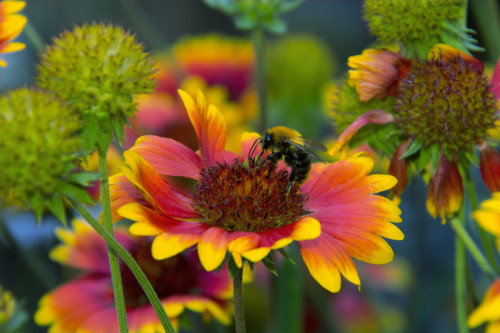
Thus, read more with the peculiarities of growth, reproduction and care for Gailardia many years of, it is safe to begin its cultivation. A bright "sunshine" on any flowerbed or the household plot will be revitalized and in the full sense of the word "deactivate" any corner of nature. The riot of paints Gaylardia will be able to please the eye, starting from the beginning of summer and ending with the first frosts.
Gaylardi Perennial, photo
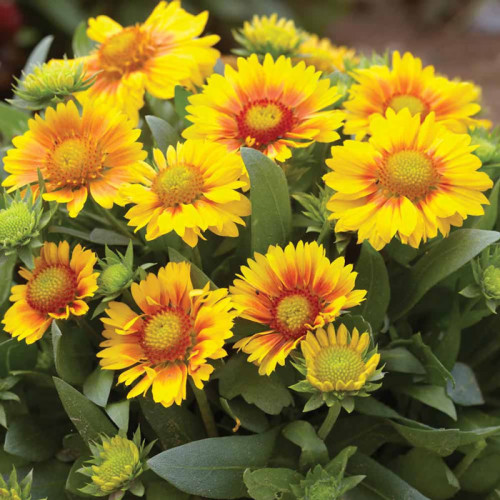
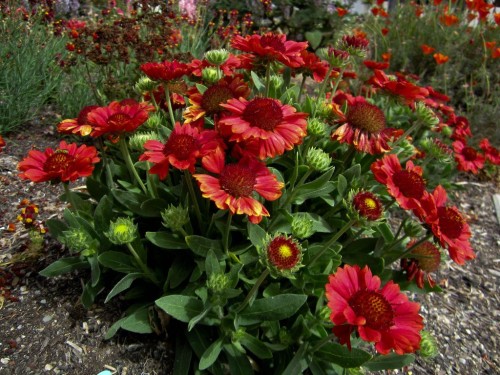
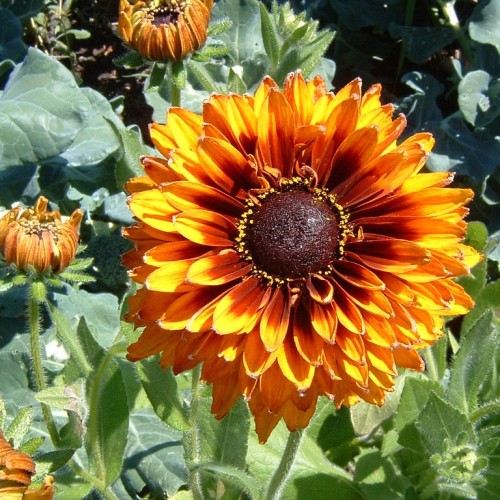
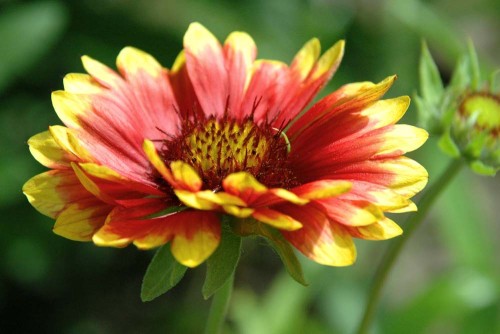

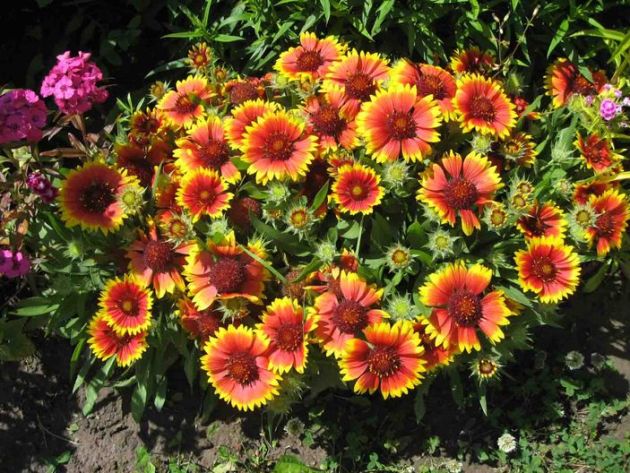
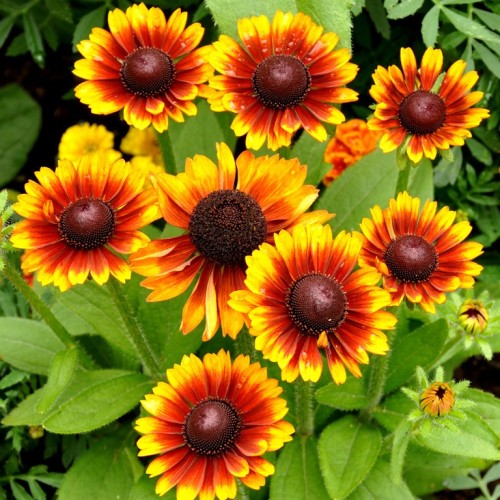
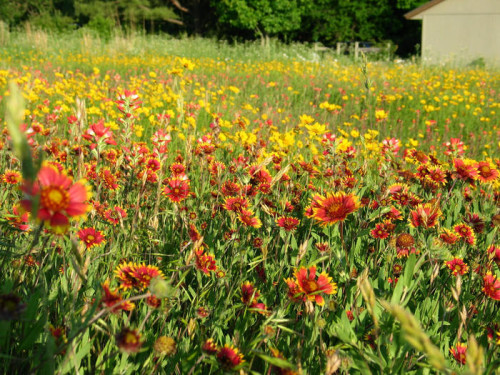
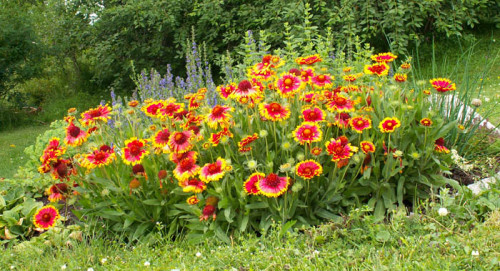
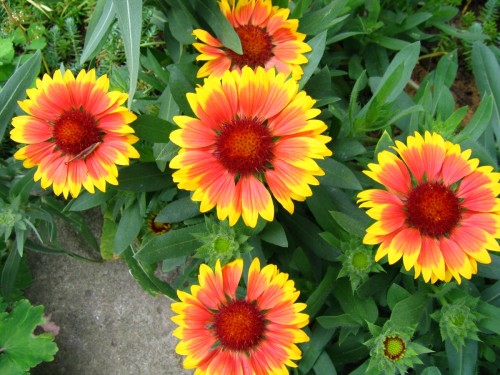
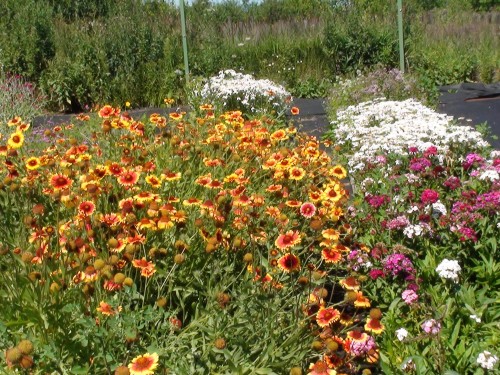
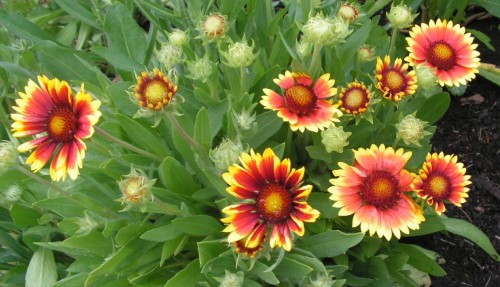
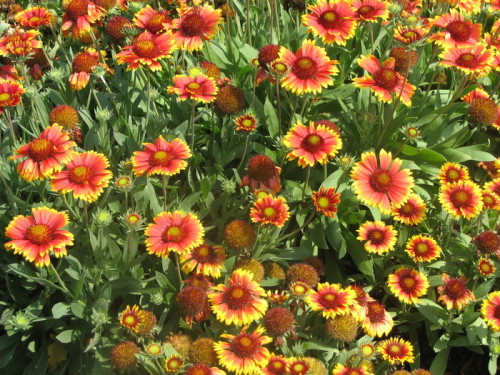
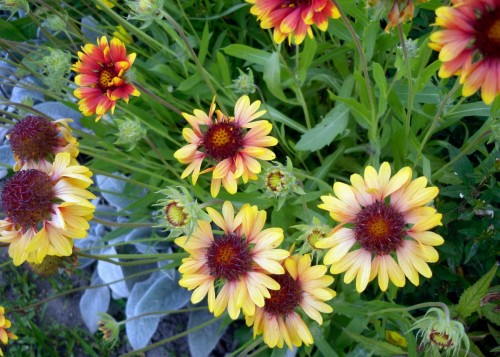
![2048x1456_744457_ [www.artfile.ru]](http://dachnaya-zhizn.ru/images/dacha/2048x1456_744457_www.artfile.ru_-500x355.jpg)
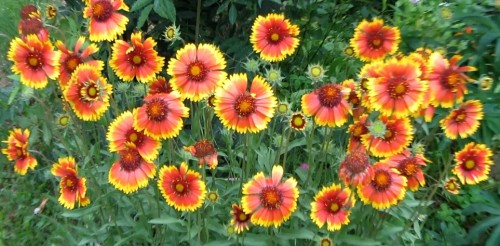

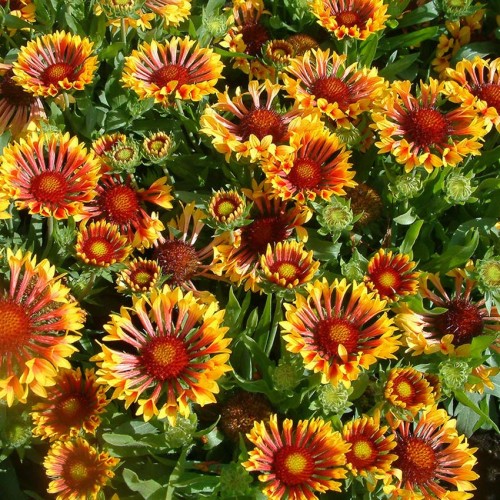
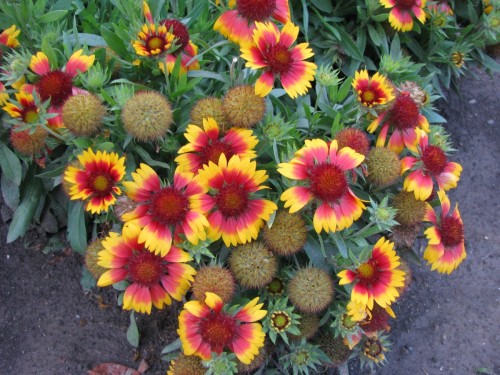












 Start a discussion ...
Start a discussion ...